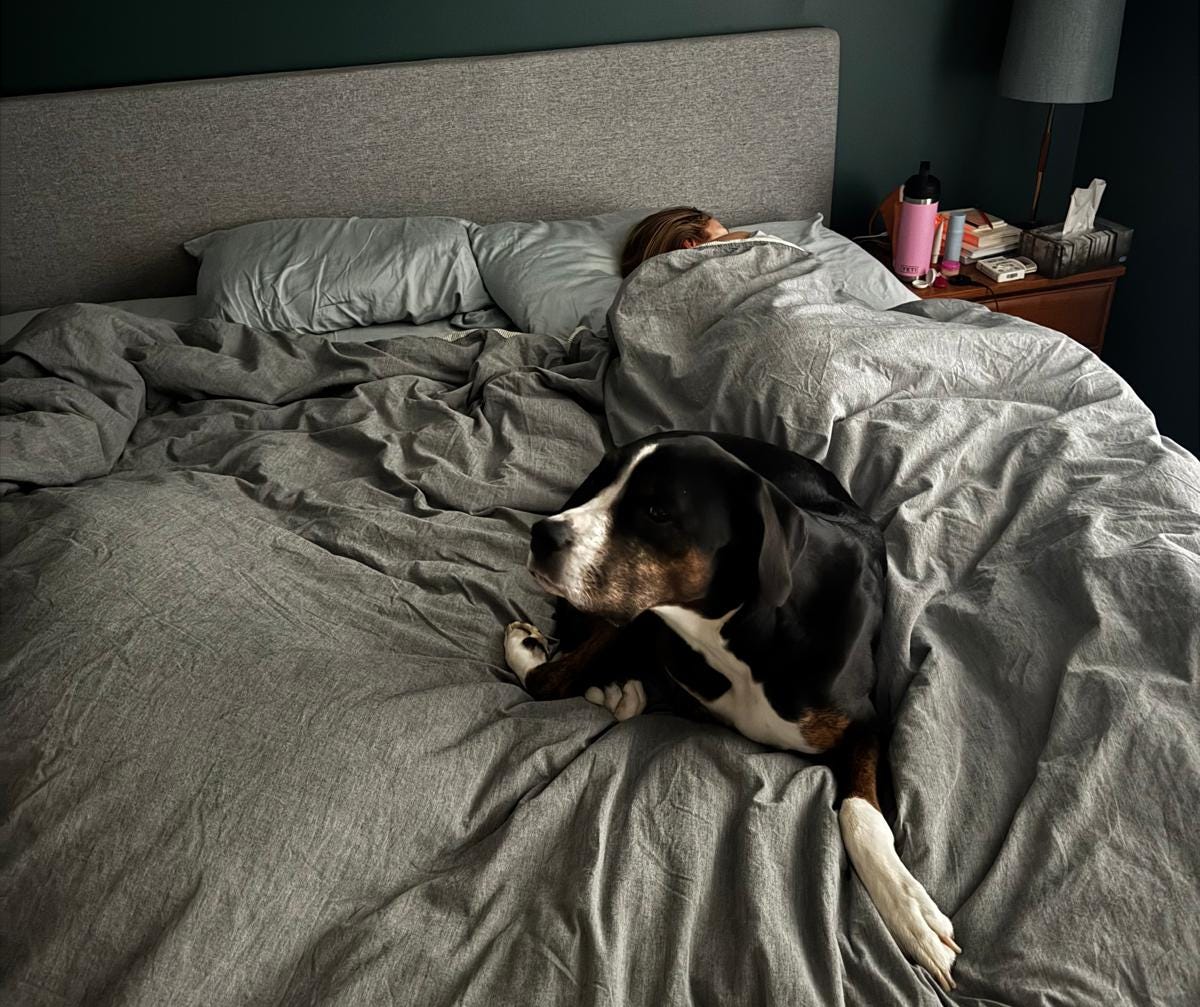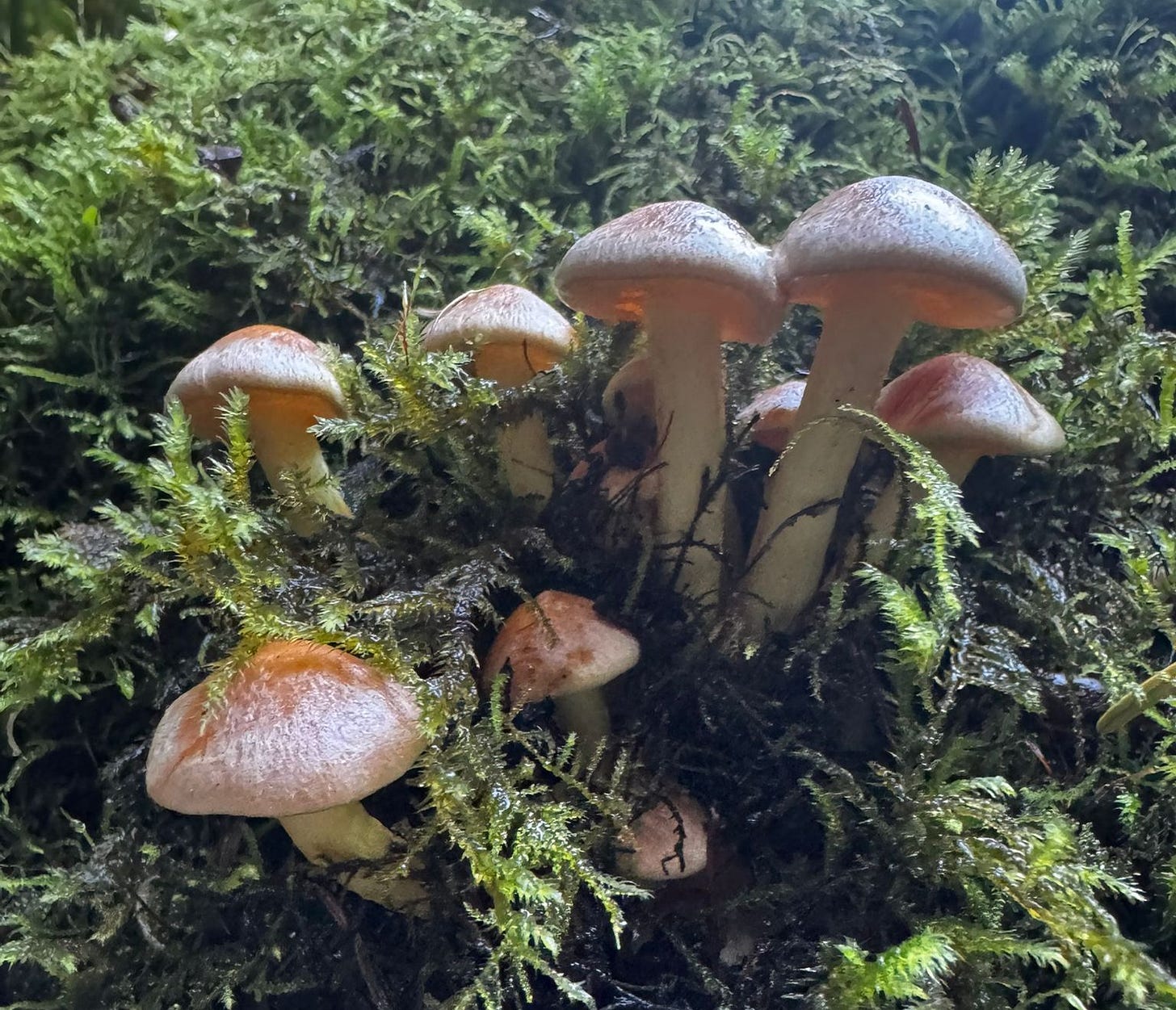How to Change Your Mind
Practical strategies for managing intrusive thoughts and seasonal depression
They say write what you know. And I’ve been inside my own mind my entire life. Unfortunately for me and anyone asking me about my past, the head trauma I sustained just before Christmas 2015 left me with a sizeable gap in my long-term memory. So I’ve resorted to filling my head repeatedly with content I feel benefits my life day-to-day, and occasionally consolidating that knowledge and those insights into helpful articles which hopefully provide value to others as well.
In the interest of improving my own quality of mind, here are some approaches I’ve found helpful for managing the less desirable thoughts that run through my head. I recently saw an insightful note from another Substack contributor recommending to “Fix hardware (sleep, exercise, diet) before software (psychology)”, so I’m organising my recommendations in roughly that order. If you have the first three categories dialed in, you’re ready to explore the rest.
Exercise

I’ve mentioned this in previous posts, but I’m not myself if I’ve missed a gym session for more than three days. I get antsy, I want to punch things, and I start visualizing violence in everyday scenarios, even my dreams. Don’t judge me until you’ve lived a day in my head. It’s out of my control—Unless I go to the gym and take out that aggression on the weights. Whatever your preferred method of exertion—be it running, martial arts, dance, pickleball, or yoga—get some. Daily if possible, but at least a couple to three times per week.
Sleep
If I had an extra hour of sleep for every time I’ve heard—or told someone else—that “sleep is the foundation of health”, I might not have any sleep debt. The most compelling argument to ditch the old colloquial “I’ll sleep when I’m dead” comes from a source I’ll mention in a later section: Peter Attia, MD., in his book Outlive. He wrote an entire chapter on the importance of sleep, and in a book all about longevity, this shouldn’t come as a surprise. The question that shook Attia out of his medical school-indoctrinated perception of sleep as the enemy was: “If sleep is so unimportant, why hasn’t evolution gotten rid of it?”
Think about it. We spend about a third of our life unconscious, unable to defend ourselves. Doesn’t this pose incredible risk to our caveman genes and the prospects of passing them along? Shouldn’t nature have found a way to keep us vigilant against the threat of sabre-toothed tigers and marauding rival tribes? Nope, she left that in. Which means it must be a feature, not a bug.
Since many books have been written on the benefits of sleep and methods to get more of it—such as Outlive and the spectacular Why We Sleep which I’ve linked in the header—I’m not going to elaborate further besides this: Get more sleep. And if you need some assistance, my wife and I have gotten a ton of value from our ŌURA rings (discount in the link).
Mindfulness

I know, I know. Beating a dead horse here. I still contend there’s a “don’t knock it ‘til you try it” aspect to meditation. And by “try it”, I don’t mean once, for five minutes, and then never again because it’s boring or you can’t stop thinking about things. Several theories exist about how long it takes for habits to stick, and even more about how long it takes for the benefits of a habit to appear. For me, the book Altered Traits was enlightening in persuading me that a consistent meditation practice was worth committing to, despite the density of the scientific research contained within. Does that mean I’ve meditated every day since reading that book? Heck no. I’m as imperfect as the rest of humanity. But I still keep one foot in the mindfulness pool in the form of an ongoing subscription to the Waking Up app, because I’m aware that the resources available there are worth their weight in gold, and I refuse to give up my access to them, even if I don’t take full advantage every day, or even weekly. It’s a work in progress.
What’s your experience with meditation? Share your thoughts in the comments below.
Ketosis

Don’t get me started on why “diets” are a bad concept in their entirety. And yes, the quotes are intentional. The idea and the perception of diets is fraught with conflict and vulnerability, and in our household, we simply choose not to use the word because of the baggage it carries. Nutritional protocols, on the other hand, is a term I borrowed from Dr. Peter Attia, MD. for good reason. I’m going to use “diet” for the sake of brevity in this article, but my point stands. Attia explains in his magnificent book Outlive: The Science and art of Longevity, that diets tend to fall into one of three categories: calorie restriction (CR), dietary restriction (DR), or time restriction (TR).
We’re not talking about calories here. And while my wife and I are occasional participants of the time-restriction modality (see intermittent fasting), that hasn’t been proven to directly affect mental health either. Bear with me.
The ketogenic diet has been used successfully for decades to treat epilepsy, a metabolic condition of the brain which causes seizures. Dr. Chris Palmer contends that mood disorders like depression, anxiety, and even OCD, PTSD, and schizophrenia are also metabolic conditions, and could be treated with a ketogenic diet. And he has proven that it works.
So have I.
Two years ago, after I listened to the podcast episode I linked above, Mary and I went all in on the keto diet for the duration of the winter months of 2023-24. In the spirit of full disclosure, I was begging for us to quit after two days. I wanted carbs SO BAD. I didn’t think we could do it. The first two to three weeks were utter torture. But after a month? It was kinda crazy to even think of now, but I was…better. Of course I can’t remember many details about how much better, but compared with the next winter when we just ate whatever we wanted? That sucked. This season, so far having not obeyed any nutritional protocols designed for optimal brain health, hasn’t exactly been delightful. The problem with the keto diet—one of them at least—is that it’s quite pricey. For those unaware of the general structure of the ketogenic diet, the goal is to hit these percentages of each macronutrient every day: >70% fat, 20-25% protein, <5% carbs. The point is for the body to switch from burning carbohydrates for fuel to burning fat for fuel. It’s also called mitochondrial metabolic therapy.
Don’t get me wrong. All this science is pretty far over my head. I wish I understood it better, but frankly, my brain just doesn’t have that capacity in it. At least not now. I’ll get back to you after I’ve dialed my mitochondria into this better way of operating 😉
Psilocybin Microdoses
Let’s just get the disclaimers out of the way: The following does not constitute medical or legal advice, nor an admission of guilt regarding any illegal activities, and I’m not advising anyone reading this to break the law, wherever they happen to live.
Many of you have heard about this psychedelic renaissance which has been occurring since the mid-2010’s, with the resurgence of research into how certain compounds—primarily psilocybin mushrooms, MDMA, ketamine, and to a lesser degree LSD—can be used in tandem with therapeutic models to treat certain mental illnesses such as PTSD and treatment-resistant depression. I’ve found, through my own research and the research of other, much more intelligent and credible folks in the field whom I’ll leave unnamed here (but reach out privately if you want some leads on your own research), that microdosing particular “stacks” of mushrooms has been particularly effective at staving off the seasonal depression that afflicts me most winters.
First, let’s define some terms.
A microdose inherently refers to a dose of a compound, though not necessarily a psychedelic, that is sub-perceptual. Meaning that if you feel any tangible effects, either psychologically or physically, you are dosing too high. I repeat: You should not be able to feel the effects of a microdose. Which is why the research on the efficacy of microdosing is fraught with claims that rhyme with “gazebo”. And yet, the claims from people who have microdosed correctly, including myself, are that it can help turn the contrast of the world up a couple notches. No talking plants, no visual hallucinations, just a slightly easier time reflecting on what you’re grateful for and marginally less thoughts that make you crave a numbing agent.
Secondly, a “stack” is a combination of elements which, when taken together, produce an effect greater than the sum of its parts. In the cannabinoid realm, this is referred to as the “entourage effect”, and it can apply to other matter found in the bosom of mother Earth. Since I’m referring to psilocybin microdoses here, the stacks I’ve most commonly seen include lion’s mane, chaga, cordyceps, and reishi mushrooms, ginger, niacin, turmeric, cinnamon, ginseng, and ashwagandha. One stack I tried earlier this year included maca and guarana, purportedly to inspire creativity and insight, but since the dose was 125mg of psilocybin mushrooms, it just barely passed the threshold of being sub-perceptual. Though who’s to say whether that was because of the caffeine content or the dose?
The company I linked in the header for this section is my recommendation for anyone curious to explore this realm. They do everything with values-based decision-making, right down to their 100% biodegradable packaging, and I stand by the quality and consistency of the product. I’m also available for questions about this topic, fraught as it is with hand-wavy exaggerative claims and scientific guesswork. I’ve been studying psychedelics for almost 7 years, and while I admit to being an enthusiastic advocate of microdosing, I know that caution is the best default stance to take, and I strongly recommend treading carefully when considering altering one’s consciousness with external compounds.
Sunlight
The darkest time in my life came after about three years of living in the basement unit of an apartment where my only windows faced the wall of the other half of the apartment building, and north, into the back alley/parking lot. What I’m trying to say is that I had my blinds closed for over three years. No stunning views, no patio coffees, no sunlight shining into my unit. For three years. It was basically a prison cell with no mandatory exercise time outside. ‘Twas a dark time… (puns)
But Huberman can tell you all about the benefits of sunlight.
So wherever you are at in your mental health journey, I hope something in the list above was valuable to you. Just remember that knowledge is useless if it doesn’t inspire action. What one step can you take to improve your physical, mental, or psychological environment today? Share this article with someone who might benefit, and let me know in the comments which of these approaches resonates most with you.




